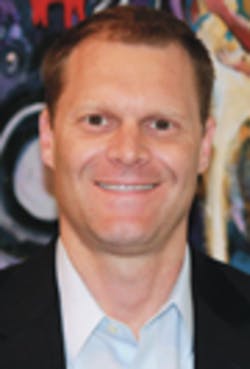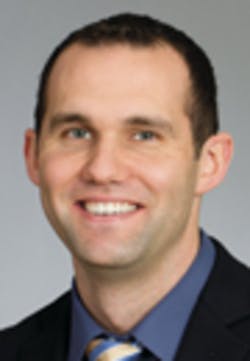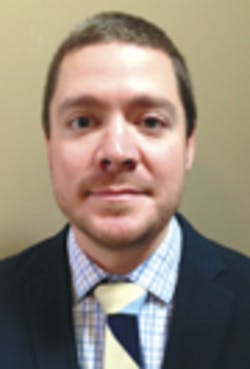Paraphrasing a famous quote attributed to Ralph Waldo Emerson about the journey mattering more than the destination may evoke an emotional response, but you may not be able to apply it to software conversions.
Certainly, once the new software programs have been in play for a while, and everyone enjoys the operational and process benefits/improvements that have emerged, they may forget the trial and error they suffered and romanticize the arduous education and training efforts to make the change.
But software conversions can cause serious corporate migraines. With the promise of increased effectiveness and efficiencies comes the pain of change butting heads against the comfort of status quo.
And disrupting processes can be inconvenient. The learning curve to implement the software can be extensive and expensive if it falls short of any “plug-and-play” claims. If patients must use the software, they likely may experience confusion and delays, too. And don't forget about the possible downtime to flip the switches if any conversion efforts extend beyond those “off” hours either.
But in hindsight and reflecting on the right software, many contend the ends justify the means. Not all, of course.
To learn what are some of the key strategies and active tactics to alleviate as much process pain as possible when converting software packages, Health Management Technology reached out to IT experts from providers and suppliers to share their anecdotes, experiences and intelligence.
HMT: What would you like IT professionals to understand about the complexity of software conversions, including the incorporation of mobile devices and cloud computing?
Steven Giangregorio,
Vice President, Professional Services N.A., BridgeHead Software
Giangregorio: Data management is challenging. Behind every software system is an enormous amount of critical data. The preservation and protection of that data should be paramount at all times. Solve this once, and things will only get easier. Forcing a round peg into a square hole each time you have an upgrade or conversion is excessively costly and risky. Finding a solution that you can leverage for the storage of that data for this software conversion, and possibly future ones, should be a key part of the project strategy and goals.
Also, no matter how hard you think you covered all the bases, someone will always try to do something that wasn't considered. Edge cases are often more important to consider than the straightforward scenarios. Try to think like someone who doesn't know anything about the new software/solution, not like someone who does. You should never have a reaction of, “Well, they shouldn't be doing it that way.” Instead, you should ask, “What will happen if they do it that way, and how can we prevent it?”
This is most often illustrated through the use of mobile devices and/or varying technologies used to access data. Don't develop to what you think is the typical end-user base, but consider the worst-case scenario. Is your data needed when end users are mobile? Everyone is mobile-connected now, and feeling tethered to the desktop feels antiquated. Will they always be in front of a full-size monitor? Can they access a single copy of the data from various systems (so it's consistent and current), or do they have to access multiple copies of the same data or timed updates of the data, thereby introducing the risk of accessing out-of-date information?
Christine Morgan, Executive
Vice President, Professional Services, e-MDs
Morgan: They should know the short-term and long-term goals of the clinic and advise the providers accordingly. This includes knowing what the budget is and not skimping on hardware. To plan accordingly, your team will need to:
- Understand the complexities of the physical location of the clinic and how the users want to use the new EHR.
- Understand the bandwidth and wireless needs.
- Determine whether providers want to use tablets or mobile devices, onsite and/or offsite.
Mark Anderson,
Client Services Executive,
CTG Health Solutions
Anderson: Two big items to keep in mind are:
- Don't underestimate the amount of planning required, and leverage experts in key areas. Many of us IT veterans have already tripped, been pushed or fallen a few times. We stand ready to help you avoid the same pitfalls. Don't rely exclusively on outside help. Strategically leverage expertise to move project deliverables in the right direction.
- If your legacy systems and their operational workflows were problematic, they will continue to be so transitioning to the new system unless actively addressed. The same concept applies if a physician is a bad documentarian of the paper record (e.g., never signs the chart, has charts stacked to the ceiling, etc.). Chances are the physician will be a poor documentarian in the electronic world, so don't overextend yourself trying to make that professional an expert. Focus the other physicians on their pre-live metrics, and then tackle the chart-hoarder.
In regard to “bring your own device” (BYOD), having mobile devices as part of the workflow can certainly improve staff productivity and employee satisfaction; however, if your mobile device strategy is perceived as a way to reduce physical workstations, it can result in incredible dissatisfaction among users. Organizations should determine early on if their mobile device strategy complements their end-user device strategy or objective to reduce overall devices, and plan accordingly.
Alex Zimmerman,
Director, Data Management
& Business Intelligence, CHRISTUS Health
Zimmerman: For the most part, enterprise software conversions have never been easier. For companies using master data management systems, data warehousing and/or employing a service oriented architecture (SOA), data can be moved around from system to system with relative ease, thereby minimizing the pain and cost involved in converting from one system to another. In the case of hosted applications, the only technical hurdle to converting software could be satisfying the data transfer specs. For smaller companies with minimum technical sophistication, there are more than enough system engineering companies who are eager to assist for the right price. IT professionals need to recognize that despite the relative improvements to converting any standing software, the effort on the business to change, adopt and try to participate in a conversion while still doing their day jobs is just as much of a daunting effort today as it ever has been.
Ashley Wagner, DC, CACCP, A L Wagner Family Chiropractic, Synergy Health Group
Wagner: As the healthcare provider and the IT person (I would not consider myself an IT professional) in the clinic, it's important for IT professionals to understand that their line of work is very complex, and quite frankly, it's scary to some people. We have a very diverse patient population in the clinic, from infants to very elderly, most of whom are not comfortable with the direction that medical records are taking. They do not like that their private health information is floating around on the Internet. It is important for IT professionals to explain to staff (in layman's terminology) how the information is kept secure, so they can, in turn, convey that safety message to their apprehensive patients.
Rob
Jennings, Director, Implementation Services, Capsule Tech
Jennings: Software conversions may not be particularly lengthy or difficult, but they can still be complex. Multiple steps provide lots of chances for problems, so the process needs to be methodically orchestrated. Input from a vendor that is an expert in the field can be invaluable. So choosing a vendor that is truly willing to support your efforts all along the way is crucial. Understand that the impact is on critical patient care where lives are at stake, and approach the situation as if your loved ones are the patients.
There is an added level of complexity with the involvement of mobile devices, as they can be turned off and not on the network, requiring time to track them down when they could be in any unit of the hospital – especially if you can't see, from a centralized location, where all of these devices are. You should be aware of where they are at conversion time.
Erich Schatzlein,
Senior Practice Consultant, Massachusetts eHealth Collaborative (MAeHC)
Schatzlein: The product being sold always seems more attractive than the product being purchased. IT professionals should understand there will likely be more limitations when implementing a new software system than perceived during demonstrations. Supporting the new software product may be a different ball game, too. Historically, IT professionals have had more of a hand in supporting software/hardware for “older systems.” The more advanced systems that are attractive to organizations are generally systems that have been designed to meet current-day standards and requirements. These systems tend to also bring more strict impediments in the amount of end-user support that can be leveraged in-house. Top the new constraints with the lack of exposure and knowledge of a new system, and IT professionals may easily feel displaced in the short term.
Joel Rydbeck,
Healthcare Strategist, Infor
Rydbeck: Pragmatic Marketing has a saying: “Your opinion, while interesting, is irrelevant.” This statement was actually targeted at product managers, and the voice of the buyer [customer] is the one to listen to. For conversions to be successful, they need to be about improving the business with user buy-in. End-user adoption is so critical. Tools like cloud, mobile and social can all help end users work changes into their activities.
Tom Giannulli, M.D., M.S., CMIO, Kareo
Giannulli: Mobile devices are a useful component of new cloud-based systems and can be easily configured and secured. Be sure the vendor has encryption at rest on the devices and be sure to enable the remote data wipe feature of the device in the event it is stolen or lost. Password lock each device's screen, in addition to the pass codes required for the specific software used.
Matthew Maennling,
Regional Vice President, Professional Services, Orion Health
Maennling: Often, the installation and configuration of the new software solution is the easiest part of the conversion process. The complexity of a conversion often stems from underestimating the disruption to staff and patient workflows, and the potential for dissatisfaction or frustration with a new system.
Also, data migration and transformation is often surprisingly complex, and IT professionals are sometimes lured into a false sense of security when new systems boast of standards compliance and standard data formats that make conversion simple and pain-free.
Further, converting a desktop system to a new solution that works on a desktop, tablet and mobile means analyzing the end-user experience of each platform, which takes more time since each platform is fundamentally different from each other.
Also, realize that it is a change, and expect that people will feel the disruption. You should:
- Put a good change management strategy in place.
- Be clear on upfront work (requirements, planning, understanding impacts and risks) and try to mitigate issues.
- Build a strong team that includes all stakeholders (clinical, IT, patient/service user, management, etc.) and also includes a vendor team.
- Define clear roles/responsibilities and SOWs.
Just as the introduction of innovations impacts the IT operations, it also impacts all other areas of the business. Benefits sound promising, but those benefits are only realizable to the extent that changes are aligned with the capability of the organization to react positively to the change. It is important to understand the different roles and their readiness to accept and adopt the change as well as the potential support and activities required to bring all these different groups to the level they require with the introduction of the new software. Start always with those functions and groups that have higher impact and lower risk, and approach all other functions and groups in a progressive manner.
Mobile devices and cloud computing bring a lot of benefits, but they also need to be aligned with regulatory requirements. The benefit of offloading services to cloud computing providers sounds enticing, but you need to ensure the appropriate monitoring, controls and service levels are reportable – and that you can actually rely on them so you can manage them. There may be shortcomings, and you will have to make decisions on how to manage them if you decide to take that route. Mobile devices have the same implications. While some of them could support many business processes, the proliferation of more devices to manage and control represents a new challenge to the IT organization, and even more when users bring their own devices. Make sure you understand this technology and its risks, and have the appropriate policies, controls and training set up in advance to enable good use of them.
Steve Deaton, Vice President, Viztek
Deaton: Adoption is the key. Finding solutions that users like will encourage adoption and better adherence of training.













